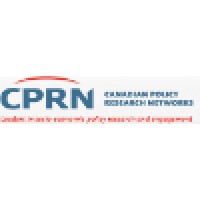
Canadian Policy Research Networks
Canadian Policy Research Networks: Timely research. Thoughtful analysis. Meaningful dialogue. Founded in 1994, Canadian Policy Research Networks (CPRN) advises Canada's leaders on the issues of our times and the policy options to move Canada forward. Our mission is to create knowledge and lead public dialogue and discussion on social and economic issues important to the well-being of all Canadians. The relevance of our work is reflected in our ranking as Canada's most influential social policy think tank. Through more than 700 publications, CPRN's work touches on many of the major socio-economic challenges facing Canadian society. We analyze important public policy issues in health care, supports to families, learning opportunities, job quality, and sustainable cities and communities. Our efforts to engage more Canadians on public policy have led to dialogues on issues that are fundamental to our democracy, including civic engagement and the low voter participation by young people. Perhaps most important, federal, provincial and local governments rely on our research for ideas on how to solve pressing policy problems, or as the basis for discussions on longer-term issues. What makes CPRN different than other socio-economic think tanks is a commitment to engaging people from all walks of life and all parts of the country in the public policy process. This requires ongoing conversations with Canadians about the issues that matter most to them. It makes CPRN's recommendations particularly relevant and applicable to the needs of average Canadians. All CPRN research is available free at www.cprn.org. In 2007, there were more than 2.5 million visits to www.cprn.org by decision-makers, policy researchers, students and Canadians from all walks of life.






